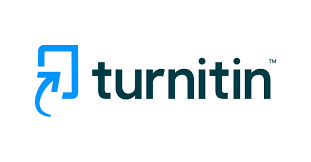ANTHOCYANIN AS NATURAL COLORANT: A REVIEW
Abstract
Keywords
Full Text:
PDFReferences
Ahmadiani N, Robbins R.J, Collins TM, Giusti MM. 2014. Anthocyanins Contents, Profiles, and Color Characteristics of Red Cabbage Extracts From Different Cultivar and Maturity Stages. Journal of Agricultural and Food Chemistry 62: 7524 – 7531.
Anggraini T, Kurniawan Y, Yenrina R, Sayuti K. 2018. Effect of ‘Jamblang’ (Syzygium cumini) Peel and Citric Acid Addition on Antioxidant Activity of ‘Kolangkaling’ Jam. Pakistan Journal of Nutrition 17 (3): 140 – 145.
Barrowclough RA. 2015. The Effect of Berry Consumption on Cancer Risk. Journal of Nutritional Health and Food Engineering 2 (1): 1-9.
Cahyadi W. 2006. Analisis dan Aspek Kesehatan Bahan Tambahan Pangan. Bumi Aksara, Bandung.
Djaeni M, Ariani A, Hidayat R, Utari FD. 2017. Ekstraksi Anthocyaninn Dari Kelopak Bunga Rosella (Hibiscus sabdariffa L.) Berbantu Ultrasonik: Tinjauan Aktivitas Antioksidan. Jurnal Aplikasi Teknologi Pangan 6 (3): 148 – 151.
Farahmandazad H. 2015. Recovery and Purification of Anthocyanins from Purple-Blue Potato. [Thesis]. Lappeenranta: Lappeenranta University of Technology.
Farida R, Nisa FC. 2015. Ekstraksi Anthocyaninn Limbah Kulit Manggis Metode Microwave Assisted Extraction (lama ekstraksi dan rasio bahan : pelarut). Jurnal Pangan dan Agroindustri 3 (2): 362–373.
Forbes-Hernandez TY, Gasparrini M, Afrin S, Cianciosi D, Gonzalez-Paramas AM, Santos-Buelga C, Mezzetti B, Quiles JL, Battino M, Giampieri F, Bompadre S. 2017. Strawberry (cv. Romina) Methanolic Extract and Anthocyanin-Enriched Fraction Improve Lipid Profile and Antioxidant Status in HepG2 Cells. International Journal of Molecular Sciences 18: 1–17.
Glasauer A, Chandel NS. 2014. Targeting Antioxidants for Cancer Therapy. Biochemical Pharmacology. 7:1-12.
Han F, Ju Y, Ruan X, Zhao X, Yue X, Zhuang X, Qin M, Fang Y. 2017. Color, Anthocyanin, and Antioxidant Characteristics of Young Wine Produced From Spine Grapes (Vitis davidii Foex) in China. Food and Nutrition Research 61: 1 – 11.
Handayani PA, Rahmawati A. 2012. Pemanfaatan Kulit Buah Naga (dragon fruit) Sebagai Pewarna Alami Makanan Pengganti Pewarna Sintetis. Jurnal Bahan Alam Terbarukan 1 (2): 19 – 24.
Hendry GAF, Houghton JD. 1996. Natural Food Colorants. Blackie Academic and Professional, London.
Husna NE, Novita M, Rohaya S. 2013. Kandungan Anthocyaninn dan Aktivitas Antioksidan Ubi Jalar Ungu Segar dan Produk Olahannya. Agritech 33 (3): 296 – 302.
Kristiana HD, Ariviani S, Khasanah LU. 2012. Ekstraksi Pigmen Anthocyaninn Buah Senggani (Melastoma malabathricum Auct. Non Linn) Dengan Variasi Jenis Pelarut. Jurnal Teknosains Pangan 1 (1): 105 – 109.
Lestario LN, Rahayuni E, Timotius KH. 2011. Kandungan Anthocyaninn dan Identifikasi Anthocyanindin Dari Kulit Buah Jenitri (Elaeocarpus angustifolius Blume). Agritech 31 (2): 93 – 101.
Mahmudatussa’adah A, Fardiaz D, Andarwulan N, Kusnandar, F. 2014. Karakteristik Warna dan Aktivitas Antioksidan Anthocyaninn Ubi Jalar Ungu. Jurnal Teknologi dan Industri Pangan. 25 (2):176 – 184.
Manson MM. 2003. Cancer Prevention–The Potential For Diet To Modulate Molecular Signalling. Trends in Molecular Medicine. 9(1):11-18.
Markakis P. 1982. Anthocyanins as Food Colors. Academic Press, New York.
Muttalib SAA, Abdullah N & ManshoorCN. 2014. Anthocyanin Content in Relation To The Antioxidant Activity and Color Properties of Garcinia mangostana Pell, Syzigium cumini and Clitoria ternatea Extracts. International Food Research Journal 21 (6): 2369 – 2375.
Nurhadi B, Nurhasanah S. 2008. Sifat Fisik Bahan Pangan. Widya Padjadjaran, Bandung.
Pebrianti C, Ainurrasyid RB, Purnamaningsih SL. 2015. Uji Kadar Anthocyaninn dan Hasil Enam Varietas Tanaman Bayam Merah (Altenanthera amoena Voss) Pada Musim Hujan. Jurnal Produksi Tanaman 3 (1): 27 – 33.
Pedro AC, Granato D, Rosso ND. 2016. Extraction Of Anthocyanins and Polyphenols From Black Rice (Oryza sativa L.) By Modeling and Assesing Their Reversibility and Stability. Food Chemistry 191: 12 – 20.
Rein M. 2005. Copigmentation Reactions and Color Stability of Berry Anthocyanins. [Disertasi]. Helsinki: Department of Applied Chemistry and Microbiology, University of Helsinki.
Sampebarra AL. 2018. Karakteriztik Zat Warna Anthocyaninn Dari Biji Kakao Non Fermentasi Sebagai Sumber Zat Warna Alam. Jurnal Industrii Hasil Perkebunan 13 (1): 63-70.
Sangadji I, Rijal M, Kusuma YA. 2017. Kandungan Anthocyaninn Di Dalam Mahkota Bunga Beberapa Tanaman Hias. Jurnal Biology Science and Education 6 (2): 118 – 128.
Sipahli S, Mohanlall V, Mellem JJ. 2017. Stability and Degradation Kinetics of Crude Anthocyanin Extract From Hibiscus sabdariffa. Food Science and Technology 37 (2): 209 – 215.
Sitepu R, Heryanto, Brotosudarmo THP, Limantara L. 2016. Karakterisasi Anthocyaninn Buah Murbei Spesies Morus alba dan Morus cathayana di Indonesia. Journal of Natural Science 5 (2): 158 – 171.
Winarno FG. 2008. Kimia Pangan dan Gizi. M-Brio Press, Bogor.
Winarti S, Sarofa U, Rodiyah KF. 2018. Karakteristik Jelly Drink Sinbiotik Dari Susu Kedelai dan Ekstrak Buah Naga Merah (Hylocereus polyrhizus). Agrointek 12 (1): 72 – 83.
Winata EW, Yunianta. 2015. Ekstraksi Anthocyaninn Buah Murbei (Morus alba L.) Metode ultrasonic bath (kajian waktu dan rasio bahan : pelarut). Jurnal Pangan dan Agroindustri 3 (2): 773 – 783.
Zulfajri M, Muttakin. 2018. Activity Analysis Of Anthocyanin From Syzygium cumini (L.) Skeels as A Natural Indicator in Acid Base Titration. Rasayan Journal of Chemistry. 11 (1): 135 – 141,
DOI: http://dx.doi.org/10.33512/fsj.v1i1.6180
Refbacks
- There are currently no refbacks.

This work is licensed under a Creative Commons Attribution-ShareAlike 4.0 International License.











